|
My daughter, 3 years old, started pre-school at the beginning of this year. This was also the kick off of making kid lunches for the next decade and a half. As a Naturopath, I have to say, I am not an extremist. I really do try to keep it realistic- I have a 3 year old and a 1 year old, I am far from perfect. However, I will admit I am most neurotic about what my kids eat. I think about the stuff that I ate as a kid, and even what I ate while I was in undergrad, and it gives me palpitations. I run a pretty tight ship but also have a 3 year old who, when asked what she would like for dinner, requests Brussels Sprouts. No joke. This is not to say she hasn't eaten McDonald's before (she has) but on the whole we keep it pretty clean. So, when it came time for lunches, I obviously wanted to continue this trend. I know many parents struggle with what to send for lunches, so I have been documenting a selection of my daughter's lunches since January. A few notes:
(Left to Right/Top to Bottom) 1. Watermelon, Apples, Raisins, Cucumber, Rice Cake with Hummus (Sunflower Kitchens). 2. Apples, Cucumber, Raisins, Hazelnut crackers with almond butter and raspberry jam, oatmeal with unsweetened applesauce and cinnamon (unfinished from breakfast). 3. Carrots, Cucumber, Raisins, Almonds, 1/2 GF/DF Morning Glory muffin, Greek Yogurt. 4. Peppers, Rice Cake with Hummus, Blackberries, Grapes, Almonds, Chocolate Chips and Raisins. 5. Blackberries, Strawberries, Blueberries, Grapes, Almonds, Cucumber, Rice Cake with Hummus. 6. Strawberries, Cucumber, Cauliflower, Ranch Dip, Dark Chocolate Almond Butter "Granola Bar" (Against All Grain), Brownie. 7. Watermelon, Strawberries, Blueberries, Cucumber, Apples with Almond Butter, Raisins and Cinnamon. 8. Cauliflower, Cucumber, Hummus, Apples, Raisins, "Granola Bar", GF Cake. 9. Peppers, Strawberries, Cucumber, "Granola Bar". (Left to Right/Top to Bottom) 1. Strawberries, Apples, Grapes, Almonds, Dried Fruit, Peppers, Cucumbers, Carrots. 2. Carrots, Cucumber, Almonds, Grapes, Strawberries, Oatmeal. 3. Blackberries, Strawberries, Peppers, Carrots, Cucumber, Raisins, "Granola Bar". 4. Apples, Strawberries, Blackberries, Grapes, Cucumber, Almonds and Dried Fruit. 5. Strawberries, Broccoli, Cauliflower, Peppers, Veggie Dip, "Granola Bar". 6. Almond Butter and Raspberry Jam Rice Cake Sandwich, Bananas, Strawberries, Cucumber, Almonds and Blackberries. 7. Hazelnut Crackers with Almond Butter and Raspberry Jam, Apples, Cucumber, Raisins. 8. Bananas, Strawberries, Grapes, Almonds, Cucumber, Avocado, Rice Cake. 9. Strawberries, Blackberries, Mango, Grapes, Apples, Cucumber, Almonds and Dried Fruit. This was Monday's lunch- Carrots, Strawberries, Apples, Grapes, Mango, Blackberries, Gluten Free Pancake 'Sandwich' with Almond butter and Raspberry Jam. Her class spent the day at the Community Garden getting the soil ready for planting, so I wanted to pack extra fruit to help keep her hydrated! She ate everything, except for the pancake sandwich. She started the morning with Oatmeal (with unsweetened apple sauce, cinnamon, coconut almond milk, raisins and a few chocolate chips- her favourite), this for school lunch and then she came home and had eggs and more veggies and dip to finish her lunch! That would be a pretty typical day for her meal/food wise. And then of course dinner is whatever we are having! The recipe for the Dark Chocolate Almond Butter "Granola Bars" can be found here at the Against All Grain Blog. Though the original recipe calls for peanut butter, I substitute almond butter and use semi sweet chocolate chips. These bars are amazing and work great because you can make a tray of them and just keep them in the freezer, cutting off pieces as needed. My daughter loves these! I also like to keep things like no bake cookie balls and other no bakes bars in the freezer for more treat options! I will usually add a scoop of Vegan protein (Sunwarrior Warrior Blend is my preference) to increase the protein in her lunch and make even her treats a bit healthier. Overall, I find my daughter loves her lunches and I do tend to ask her every morning what she would like or give her options of what she could have so she feels like she has a say in what she is eating. It is not uncommon for her to get home with a lunch box that looks like this... ...and I'm not complaining!!
Disclaimer: Naturopathic Doctors strive to provide individualized health care. The information contained in these topics is not intended nor implied to be a substitute for professional medical advice, it is provided for educational purposes only. This information shouldn’t take the place of seeing an ND for individualized health recommendations.
2 Comments
30 Days. 30 days of no sugar, grains, legumes, dairy, alcohol, processed foods or additives.
I completed my Whole 30 just over two weeks ago now. Throughout the 30 days, I got asked a lot of questions, I think the most popular being, "What do you eat!?" which I covered in my halfway mark post. This post is going to be my wrap up- what I learned, how I felt, how I feel now that I'm done, etc and the answers to the questions that have come up over the last 30 days. How did you feel? Honestly, I can't say I felt a whole lot different while I was on it. The original challenge says you will likely feel pretty junky the first week or so, however, I never really experienced this. I didn't notice much of a difference when I started, but this is likely because our diet is pretty clean to begin with- we don't really consume much gluten or bread, I have very minimal amount of dairy and I avoid all processed foods for the most part. Was it hard? Yes and no. It was hardest starting out because there was a lot more planning that had to go into it and a lot of 'staples' needed to be figured out- like mayo, ketchup, marinades, etc. There was a lot of label reading and a lot of realization just how many products contain sugar. (The answer= A LOT). This was probably the most challenging part because we use marinades and spices for a lot of our cooking- even our favourite Jerk marinade which we have almost weekly contained sugar, so a lot of recipes/meals needed to be adjusted. However, once the ball started rolling on these it became a lot easier and a lot of the recipes we found we loved and will go into our regular rotation. What did you miss the most? Chocolate. Hands down, for me, chocolate. I craved it at the beginning, in the middle, at the end. I could do without the rest but the chocolate I missed. I also think this may be because I might be Magnesium deficient since I did notice more leg/calf cramping over the 30 days. I think this is probably because I am nursing and could benefit from a nutrient boost in general. Magnesium deficiency can present with chocolate cravings. However, I really love chocolate so it may just be that too... Did you have 'tiger blood' in Week 3? If you read the full Whole 30, they claim you will have a huge boost of energy by week 3- you will feel as though you have tiger blood. I also did not notice this just like I didn't notice the run down feeling at the beginning. I think this is again because I didn't feel badly before starting this and my energy has always been pretty good. Well it's as good as can be expected for having a 3 year old and 1 year old who still doesn't consistently sleep through the night. And my diet wasn't horrible to start with. What I did notice Though it was not my goal or the reason for doing this, I did lose weight and my pre-pregnancy clothes fit well again which is a great bonus. I also found that my skin was fantastic. Disclaimer: I do have pretty good skin to begin with but do tend to have the odd blemish here and there, however, while doing the Whole 30 I had no issues at all and I found my complexion improved as well. I also learned I can not tolerate a lot of eggs, at least not the amount I was eating on this diet. I ended up with a slight rash on my abdomen, I cut back on the eggs and it improved. Now that I'm finished Since finishing, my diet has definitely gone a bit crazy- my last day was a Wednesday (though I broke and ate chocolate after dinner on Day 30), Thursday was our anniversary and my daughter's preschool Mother's Day celebration, Friday we took the in-laws to the ROM for the day, Saturday was my son's first birthday party and Sunday finished off with Mother's day. It was a sugar/gluten/dairy filled weekend! Thursday kicked off with a Mother's Day celebration with my daughter's preschool at Rumbletum Cafe in Conestogo. We had the most incredible Lemon Blueberry Scones. Seriously, I am still thinking about them. However, within about 20 min, I felt terrible- nauseous, fatigued, bloating- just overall not great. Totally worth the amazing scones which I will have again, but still terrible. The rest of the weekend went similarly, however, nothing shocking. This is where I noticed the difference the most, when I added things back into my diet. Because I have done gluten/dairy free and hypoallergenic diets before, I did know what to expect. For myself, I know that I can tolerate dairy quite well- it's only if I gorge on it that it really affects me. My diet is very low in diary in general so I don't worry about this too much. When it comes to gluten, I can tolerate small amounts, but the less the better. Generally, I find if I have maybe one serving of gluten in a day, I'm fine, but if I was to have it more than that in a day, not so good and likely if I was doing this daily it would be worse. I also find my gluten sensitivity is worse if it's combined with sugar- think amazing scone. I find just the shear amount of sugar/starch is too much and I feel awful. Even now, about 2 weeks after finishing, my diet isn't back to where I want it to be as we've had my husband's parents staying with us from Ireland so our routine has been a bit thrown off and I can definitely feel it. We are slowly getting back on track and I do want to adopt a majority paleo/no sugar diet for our 'normal'. Will I do this again? Absolutely! I think it was a great experience and really not as hard as you might think. Again, once you have a bit of a game plan and get into it, it's actually pretty easy. I found this was a good time of year to do it (Spring) since a lot of fruits/veggies are coming in to season and bbq season is kicking off as well. I could live on grilled chicken and vegetables. I think this will become my 'detox' of choice as I still find sugar (chocolate) my greatest challenge. I am already planning my next round for September (Fall). However, I don't think I will do the full 30 days again, as I found it a bit long. Because I am going to make this a routine detox, I will probably do 14-21 days (2-3 weeks) instead to make it a bit more feasible, though I would recommend doing it for the full 30 days at least once. I will also add some liver support supplements as well once I am no longer nursing to really up the benefits. Overall, it was a great experience! Disclaimer: Naturopathic Doctors strive to provide individualized health care. The information contained in these topics is not intended nor implied to be a substitute for professional medical advice, it is provided for educational purposes only. This information shouldn’t take the place of seeing an ND for individualized health recommendations. Today is Day 15 of my Whole 30. The halfway mark. Fifteen days of no dairy, no grains, no legumes, no preservatives and no sugar (even natural maple syrup, honey, etc). I decided I wanted to do the Whole 30 since having my second child. He turned one this past Saturday and for the last year, I have been eating too much sugar and craving sugar after meals. I didn't want to feel like that anymore and I really wanted to cut down on the sugar so, The Whole 30 seemed perfect. I have to admit our diet is pretty clean to begin with- limited gluten and dairy and aside from my sweet tooth, not much sugar, so I haven't actually found this diet too hard to do. I miss chocolate, sure, but I was very motivated to make the change so I find every time I want sugar, it almost reinforces my desire to break the habit and increases my willpower. There is however, a lot I have learned in the last 15 days both with recipes and things I plan to continue indefinitely and things I know I won't. I have also gotten the comments, "Why are you doing that to yourself" or "So what are you eating"- well I answered the why above, but I will also share the what I've been eating as well. Here is my half way mark insights: What I Have Been Eating I have actually been loving what I am eating! And pretty much all the new recipes we have tried, we have been super happy with and plan on keeping them in our regular rotation. Here's a little photo recap of most of our meals (I tend to be a creature of habit and can eat the same left overs for days without complaint so I don't have photos of every meal since there would be a lot of overlap and some days I just forgot to photo!). This is a good array of the meals we have been eating- from left to right and top to bottom:
1. Veggie Scramble with homemade ketchup, 2. Spinach salad with chicken and apples with cinnamon and almond butter, 3. Lemon Pepper Salmon with hollandaise and steamed broccoli, 4. Chicken Fajitas with salsa and homemade guac and coleslaw, 5. Mixed greens salad with sunflower seeds and chicken, 6. Bun-less burgers with baked sweet potato 'fries' and coleslaw, 7. Egg Salad with Almond rosemary crackers and field green salad with sunflower and pumpkin seeds, 8. Chicken Korma with cauliflower rice, 9. Coconut ginger chicken 'stew' with broccoli, cauliflower and green beans, 10. Marinated grilled chicken with grilled peppers and coleslaw, 11. Left Over Coconut ginger chicken stew with raw veggies and apple slices; 12. Grilled marinated chicken with grilled peppers and mushrooms and field green salad, 13. Sun dried Tomato Meatballs with steamed broccoli, 14. L/O Meatballs with mixed green salad, 15. Turkey Burgers with grilled pineapple, baked sweet potato 'fries and coleslaw, 16. Scrambled eggs with sautéed peppers and onion, bacon and apple slices with almond butter, 17. Apple Slices with cinnamon and almond butter (a dessert), 18. L/O Turkey burger with pineapple, mixed green salad and raw veggie slices, 19. Marinated grilled chicken with grilled peppers and baked kale 'chips', 20. Scrambled eggs, field green salad, sautéed mushrooms and onions and bacon. I dare anyone to say that those meals look boring. Some are breakfast, some are lunch and some are dinner but all have been delicious! Flops and Learning Curves Mayonnaise: I never really liked mayonnaise growing up but then I met my Irish husband. The Irish put mayonnaise on everything. Mashed potatoes and mayo is potato salad, mayo based coleslaw, baked potatoes get mayo not sour cream, they will even slather bread with mayonnaise and have a mayo sandwich. You can also find turkey/stuffing/mayo mixed and put on bread to form a pretty much bread/mayo sandwich at any gas station, grocery store or airport in Ireland! Needless to say I have come around and it is probably my guiltiest pleasure. However, the processed conventional stuff is filled with not great ingredients- from junk canola oil to preservatives to sugar. It's not exactly a health food. However, by making it yourself, you can skip all the added junk and make a spread that isn't all that bad- it's really only eggs and oil, and on this Whole 30 it's pretty non-negotiable since you will be hard pressed to find a pre-made version that is compliant. I did my research and decided the immersion blender method looked the best- and most difficult to screw up. My first 2 attempts were disasters. They were egg/oil soup. The problem was the mixing jar. Our immersion blender was my husbands before we even met and it did not come with a blending jar (or so I am told). So I first tried using a magic bullet cup- it was too small so it didn't let the oil down into the blade and when I lifted the blade to get the oil- disaster. Next I tried a jar we had from honey- it was too wide and allowed too much to mix, too fast without creating the emulsion. Apparently, you can't just buy the mixing jar and I did not want to buy a second immersion blender just to get the jar. Then I found this blog with instructions. She used a wide mouthed 500mL mason jar. Perfect. I popped out to Canadian Tire and bought the mason jar (actually 12 of them since they are only sold by the case of course but glass mason jars are my storage of choice so c'est la vie). This time, nailed it! And I have done multiple batches since without fail. And it's already in the storage container, soooo convenient. My first few I just used egg, lemon juice, salt and pepper. They were good but not like the standard Hellman's. So I found a copycat recipe and have tweaked it a bit to get what I think is almost identical. I use:
You can mix all the ingredients into the mason jar in that order preferably. Give it a minute to settle. Place your immersion blender over the egg yolk and press it all the way to the bottom of the jar. Switch it on and just hold it there. I am extra paranoid about it turning to soup so I go painfully slow. I hold the blender down for a good 30 seconds and will ever so slowly then start to raise the edges of the blender to try and encourage more of the oil down. Once I am getting no more oil movement, I will slowly start to raise it slightly to encourage more down. When I'm finally left with only a few tbsp of oil on top I'll try to start mixing it a bit. The whole process probably takes me a good 1-1.5 minutes and I NEVER stop the blender until it's done. A few notes: the light olive oil is VERY important as apparently the extra-virgin version makes a very bitter terrible mayonnaise. I did not try this, I took everyone's word for it and stuck with light. Do the same. Yes, this uses raw egg. I am fine with that since we get our eggs local from St Jacobs and the risk of salmonella is extremely low (1 in 20,000 eggs). However, you can apparently find pasteurized eggs (in the shell) but I haven't looked for them. Honestly, I don't think I will ever purchase mayonnaise again. It's so easy to make and I find more convenient to just make more than to go out and buy more and I get to control the ingredients! Turkey Burger Mush: You may notice in the photos above that the turkey 'burgers' look more like cooked ground beef than burgers. That's because they were. They turned pretty mushy and wouldn't hold their shape at all. I went back to the original recipe, and read that if you use fresh pineapple juice then you can not let them marinade longer than 30 min or they turn to mush. The author's hypothesis is it may be the enzymes in fresh pineapple juice that is to blame. Well, I didn't buy juice at all, I simply pureed some of the pineapple I had bought for the rings in the bullet and added that. And after reading that and thinking about it, it makes perfect sense. Pineapple is a source of bromelain which is often used as a digestive enzyme. All pineapple juice you would get in the grocery stores would be pasteurized which would destroy enzymatic activity. But fresh pineapple would have all it's enzymes intact, hence turning my turkey meat to mush. Though the texture wasn't great, the flavour was and I will definitely try this recipe again but this time just leave out the pineapple juice in the patty completely. Compliant Bacon: A lot of people are surprised to hear that bacon contains sugar. It does. We usually get our bacon from Dar's at St Jacob's Farmers Market. When I started this I went in and asked if it contained sugar. The man who makes the bacon said no but dextrose (a simple sugar) is used. I passed and went to Goodness Me where I had seen a brand that had no sugar, Mark's Mennonite Meats. I actually ended up meeting Mark as he had a little sample booth set up at Goodness Me, and was able to speak with him. His bacon also contained dextrose, however, it wasn't on the label because it was undetectable. It is added because the meat is cured with live culture/bacteria and dextrose is added to feed the bacteria. However, it's consumed by the bacteria so it won't actually be in the final product. So, moral of the story, added dextrose is fine and we have been using both Dar's and Mark's. Thing's I'll Maintain and Things I Won't
Overall, my husband and I agree that we will strive to continue to be grain and sugar free throughout the week and be less strict/indulge a bit on the weekends. We want to get to a point where being grain/sugar free is second nature. And yes, both my husband and my children are doing this 'diet' as well for the most part. My children still have oatmeal with unsweetened apple sauce and cinnamon for breakfast and will have rice cakes and hummus for snacks. However, because we all eat the same dinner and usually lunches, the majority of their meals are Whole 30. And no, I am not concerned about this not being healthy for them- increasing vegetables will never be unhealthy. I feel great eating this way and I know the weekend I end (actually my last day is a Wednesday, Thursday is our wedding anniversary, Saturday my son's first birthday party and Sunday Mother's Day) I will be indulging...a lot...and I'll probably feel like garbage. So by Monday I will be more than ready to get back on the train. The big question though, will I do this again? Absolutely. I think this will actually be my 'detox' of choice. Disclaimer: Naturopathic Doctors strive to provide individualized health care. The information contained in these topics is not intended nor implied to be a substitute for professional medical advice, it is provided for educational purposes only. This information shouldn’t take the place of seeing an ND for individualized health recommendations. 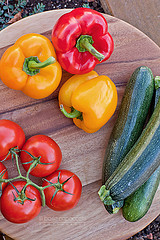 Photo Credit: Lili B. Capaccetti via Compfight cc Photo Credit: Lili B. Capaccetti via Compfight cc If I had to pick what causes some of the most confusion when it comes to discussing nutrition, I think I would have to go with carbohydrates. When people hear the word, most immediately think of bread, and I would even say grains for that matter. Many don't even realize that all vegetables are considered carbohydrates, as well as, all fruits. So let's answer some common questions. What is a carbohydrate?
Are Complex carbs really better?
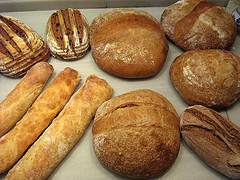 Photo Credit: Ibán via Compfight cc Photo Credit: Ibán via Compfight cc I thought whole grains were better? How can that be if it's absorbed the same?
And what about gluten?
Gluten Sensitivity? Celia? What's the Deal?
It seems everyone is gluten sensitive these days, why?
But I've heart Gluten-Free is often worse than the 'regular' stuff?
So what to do?
Disclaimer: Naturopathic Doctors strive to provide individualized health care. The information contained in these topics is not intended nor implied to be a substitute for professional medical advice, it is provided for educational purposes only. This information shouldn’t take the place of seeing an ND for individualized health recommendations. 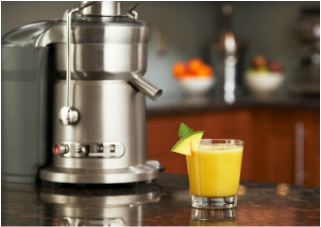 Photo Credit: Food Thinkers via Compfight cc Photo Credit: Food Thinkers via Compfight cc I have been asked this question so many times now: What's better, making a smoothie or juicing? As much as many may think this should be a black and white question, it's actually a bit more complicated. Juicing has become ever more popular in the last couple of years- though die-hards may say it's been popular long before then. With food and health related documentaries becoming more mainstream and their wide availability on Netflix, films like Fat, Sick and Nearly Dead and Food Matters have likely been a driving force behind juicing's ever more popularity. Juicing offers the body nutrients on a silver plater so to speak. It's like a 'nutrient shot' for your body. Fibre which would normally help slow digestion and absorption is removed allowing for nutrients to be quickly absorbed and utilized. This can be very helpful to rapidly increase ones nutrients as multiple fruits and vegetables are used to make just a cup of juice, while trying to eat all those fruits and vegetables would fill you up a lot faster- again, because of the fibre. That leads into some of the downsides of juicing, the first being, fibre is good! We need fibre! For what you might ask? Well here's a little breakdown of fibre's role in the body:
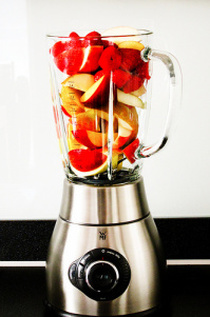 Photo Credit: lkaestner via Compfight cc Photo Credit: lkaestner via Compfight cc The second issue is that because fibre is removed, everything is absorbed much, much faster and not just your vitamins and minerals but also sugar. This can lead to a blood sugar spike. Now, this issue can be easily resolved by reducing the amount of sugar in the juice- ie. reducing the amounts of fruits and starchy or sweet veggies used like carrots. However, I often find when I hear about the ingredients going into a juice it's very heavy in fruits and very light in the veggie department. I recently had someone tell me after a work out class the instructor gave everyone some fresh juice she had made and it was SO good. So I asked what was in it- carrots, apples, ginger, lemon. Of course it tasted great! It was like a little sugar shot! Yes, it had lots of antioxidants. Yes, it had lots of vitamins and minerals. But it also probably had about 50 grams of sugar! However, smoothies can also fall victim to this same issue- too much sugar. How many of you make fruit smoothies in the morning? Do you use frozen fruit (like strawberries), a banana, water, splash of orange juice, vanilla yogurt (maybe it's Greek)? Would it surprise you to know this combo packs about 58 grams of carbohydrates, only 6.3g of which is dietary fibre, and only provides 10.7 grams of protein and 2.4 grams of fat most of which is saturated (from the dairy)? That means that there is over 50 grams of sugar in this smoothie- 2 Snickers chocolate bars worth! I do want to note, I am not promoting chocolate bars for breakfast, the smoothie does provide more nutrition- vitamins, minerals, antioxidants- than a chocolate bar would, the issue is the huge amount of sugar. So, where does this leave us? You may be thinking neither smoothies or juicing is the way to go! But I would say don't drop either! Like most things, it comes down to using either, a juice or a smoothie, in the right way and doing it properly. Smoothies can be a wonderful part of your diet- quick, convenient, tasty and a great way to get a few servings of fruits and vegetables- they just have to be done properly. Here are some tips:
Smoothies are a great option as a meal, because (if done properly) they contain carbs, proteins, fats, and fibre. They will provide all the macronutrients for a balanced meal and lots of fibre. With fat, protein and fibre, smoothies can keep you satisfied until your next meal and temper the carbohydrate absorption to keep blood sugar levels steady. Juices are a great addition to a healthy diet, again, assuming they are done properly with mostly veggies and only a piece or two of fruit for sweetness. Because they don't provide any real fat, protein or fibre, I wouldn't recommend a juice as a meal but a great addition to a meal or as a snack. Juicing is a fantastic way to boost nutrients and increase your veggie intake. You can also keep the pulp left over from juicing and use it in another recipe- that way you still get the fibre and any nutrients left behind! Like everything, it's all about balance. Both smoothies and juicing can be great additions to your diet, they just have to be done properly and used appropriately. Disclaimer: Naturopathic Doctors strive to provide individualized health care. The information contained in these topics is not intended nor implied to be a substitute for professional medical advice, it is provided for educational purposes only. This information shouldn’t take the place of seeing an ND for individualized health recommendations.
 I am getting back on the train, the blogging train. You could call it my 'new year's resolution,' but I'm not a big believer in the concept. I think that every day is an opportunity to make a change in your life! Picking January 1st as the only day to make the commitment can set you up to fail. It's a growing process and it takes a little work every day to make the changes you want. Which brings me to my 'every day' resolution; for the last six months or so I have been making the commitment to "go green." To remove the chemicals from my home. Especially now that I have a daughter, I have been striving more and more to get the bad out and the good in! So I am going to share my journey to clean products and let you know a few of the common ingredients in the common products to avoid and why! I first started to 'go green' after actually looking at the ingredients in my skin care (face wash, toner, moisturizer, soap). Have you ever looked at yours? It was kind of scary to see chemical after chemical listed. I mean, I was putting this on my face every day! It was being absorbed into my skin and body every day allllll day! I had started using a full skin care regime in high school, it had been YEARS of lathering on these chemical laden products! And even though they claimed to make your skin just perfect, I found I still had the odd break out (I am lucky to have pretty clear skin). So I started to make an effort to change it to healthier products. It's difficult to know where to begin, there are SO many products plastered with claims, but the claims aren't always fully accurate. My first switch was to a well-known larger brand found in most of the big stores (like Loblaws Organics Section). Even with these more natural products, they were still not great. 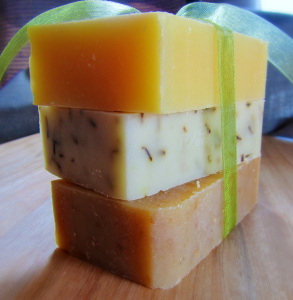 It was by chance that I found the products I use now; thanks to Groupon. There was a random offer for holistic skin care. It was very good deal, so I said I'd give it a chance. I am still so glad I did. Pretty Cosmetics is my personal favourite, not only are their products some of the cleanest products I have seen, but they are a small Canadian company (based out of Toronto) started by two holistic nutritionists. However, there are a tonne of great companies (and products) out there; Suki, Olivier Soapery, Coastal Classics and even Burt's Bees to name just a few. However, you also have to be a bit savy, just because one product from a company is good, doesn't mean they all are! A quick google search will bring up a tonne of options! But how does the stuff you're using now rate? You can check it out at the Environmental Working Groups website Skin Deep Cosmetic Database. If the product isn't listed, you can look up each ingredient individually. Here are a few of the common ingredients in many skin care products that should definitely be avoided and why: Fragrance: this is in just about EVERYTHING, but did you know that Federal Law doesn't require companies to list any of the chemicals that are actually in their fragrance 'mixture'? Fragrance can contain just about anything including hormone disrupting chemicals and are one of the most common allergens in the world. Parabens: These are estrogen-mimicking chemicals and have actually be found in breast cancer tumors in 19 out of 20 women! They can disrupt the endocrine system and cause reproductive and developmental disorders. Phthalates: Studies have shown a link with male reproductive system disorders. This disruption can even occur in utero, which is why pregnant women should also avoid phthalates! The most interesting part, is that since switching from the 'high end chemical-promised skin care' to the clean, chemical free products my skin has never been clearer! Plus, it's important to remember, every time you slather something on your skin, it's absorbed deeper into your bloodstream and then it's your liver's job to get rid of it. Another reason why detoxing is so important, but that's another topic, for another day! When you really start to look at the products and ingredients you are using, it can seem daunting to try and remove all the chemicals, but pick one item at a time and find an alternative. You'll be amazed at how quickly you will start to notice a difference! Disclaimer: Naturopathic Doctors strive to provide individualized health care. The information contained in these topics is not intended nor implied to be a substitute for professional medical advice, it is provided for educational purposes only. This information shouldn’t take the place of seeing an ND for individualized health recommendations. 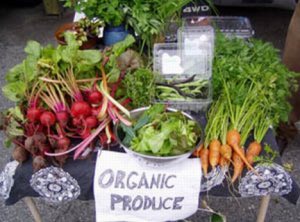 The Shopper's Guide to Pesticides ranks pesticide contamination for 53 popular fruits and vegetables based on an analysis of 51,000 tests for pesticides on these foods, conducted from 2000 to 2009 by the USDA and the federal FDA. Nearly all the studies on which the guide is based tested produce after it had been rinsed or peeled. Contamination was measured in 6 different ways: % of samples tested with detectable pesticides; % of samples with two or more pesticides; Average number of pesticides found on a single sample; Average amount of all pesticides found; Maximum number of pesticides found on a single sample; Total number of pesticides found on the commodity. The fruits and vegetables were then ranked from most pesticides to least. According to EWG’s calculations, by choosing 5 servings of fruits and vegetables from the Clean 15 rather than the Dirty Dozen, you can lower the volume of pesticide you consume daily by 92%!!! For More info visit www.ewg.org/foodnews/ 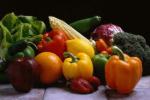 The Dirty Dozen
 The Clean Fifteen
Taken from Spring 2012 Newsletter, to download your own copy of the newsletter, under Resources! Disclaimer: Naturopathic Doctors strive to provide individualized health care. The information contained in these topics is not intended nor implied to be a substitute for professional medical advice, it is provided for educational purposes only. This information shouldn’t take the place of seeing an ND for individualized health recommendations. 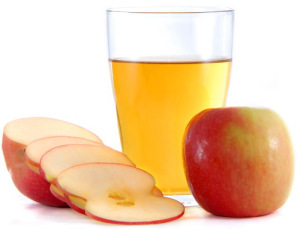 Trying to walk the aisles of a grocery store without seeing products covered with health claims is pretty much impossible anymore. From "low fat" to "source of fiber" to the heart healthy check. Marketing is good. Very good. Unfortunately, many of these claims are only half true. One of my biggest issues is the heart check symbol. A quick look at the Heart and Stroke website shows a HUGE list of foods that have received this health symbol. Checking their nutrient requirements in which to receive the symbol looks extensive but let's take a closer look. The first food listed is fruit juice. The requirements: No added Sugar, a Source of Vitamin C (50%) OR Vitamin A (25%) OR folate (25%) OR fiber (2g). Sounds good, right? But let's put this in perspective, a quick look at one of the products that has received this symbol shows that in 1 cup of this juice, you are getting 160 calories, 39 grams of sugar (!!!!!), NO fiber, NO protein, NO fat. You are essentially drinking a glass of sugar. There is more sugar in this one glass of juice than in a Snickers candy bar! In comparison a medium apple has only 71 calories, 19 grams of carbs (including 3.3 grams of fiber), and a whole lot more nutrients. In general, I don't recommend drinking juice. At all. Eat fruit, drink water. This is a perfect example of a half truth. It's true that this product doesn't contain unhealthy fats. But does that make it a healthy choice? Absolutely not. Another great example is the appearance of every product containing olive oil these days. Olive oil is high in Omega-9 fats and has been shown to benefit heart health. In fact, 2 tbsp/day of raw olive oil has shown benefit in cardiovascular health! Many products have now added olive oil and slap a health check on their products. The problem is, the amount of olive oil in a lot of these products is only a very small percentage. For example, popular margarines only contain 8%. Out of the entire product. The rest is canola oil which hasn't shown the same health benefits. Not to mention the artificial flavour and colours added. Again, yes this product has some heart healthy oil in it, but is it a healthy product overall, no. Some easy health points to remember: 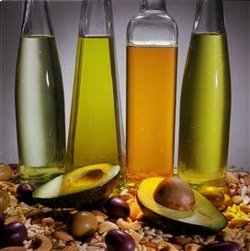
Disclaimer: Naturopathic Doctors strive to provide individualized health care. The information contained in these topics is not intended nor implied to be a substitute for professional medical advice, it is provided for educational purposes only. This information shouldn’t take the place of seeing an ND for individualized health recommendations. 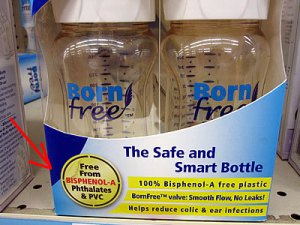 You can't walk through a store these days without seeing at least a few items with that "BPA-Free" label plastered all over the packaging. But does that really mean the plastic used is safe? Healthy? Or even better? BPA is a chemical used to make that clear hard plastic you may actually be carrying your lunch in right now. We also know that this chemical can leach out of plastic into our food and eventually into our bodies. BPA is an endocrine disruptor, meaning it can mimic hormones in our body causing a variety of problems. Specifically, BPA is an estrogenically active compound and has been linked to birth defects, cancers and other health problems. Infants and children are especially vulnerable since their little bodies are less able to detoxify it from their systems. Exposure can even occur while in the womb since BPA can cross the placental and affect development. So, I buy BPA-free, no problem, right? Ever wonder what other kinds of chemicals being used to make plastic could be leaching out of even those BPA-free bottles and containers? Well, so did some researchers, and a study was conducted and published in July 2011 in the Environmental Health Perspectives. It took over 400 everyday products that were BPA-free and tested them for other estrogenic chemicals that could still be leaching out under normal stresses (heating, microwave, dishwasher, sunlight exposure, etc.). What they found: "Almost all commercially available plastic products we sampled—independent of the type of resin, product, or retail source—leached chemicals having reliably detectable EA (estrogenic activity), including those advertised as BPA free. In some cases, BPA-free products released chemicals having more EA than did BPA-containing products." When it comes to baby bottles, they found that at least one part of each baby bottle always had an estrogenic chemical that leached out. And the more stress it under went, the more it leached....how many times do baby bottles get heated, even in a week? 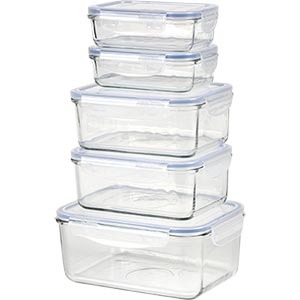 So, what to do? Switch to glass! There are many available products on the market at super reasonable prices. Over the last couple years, I have phased out all the plastic from our kitchen and replaced it with glass containers (ours of choice, Glasslock, available at Costco!). And when it came to baby bottles, we went with glass as well, we chose Life Factory (check out baby favies for more info). A good plastic free water bottle is a must, since it is refilled constantly, try a stainless steel bottle such as those from Kleen Kanteen or my new fave from Life Factory as well. The best part is, these glass or stainless steel products virtually never wear out and will last a life time. And you can rest assured there are no unwanted chemicals taking up residence in your meal. The reality is that in this day and age, it's pretty much impossible to avoid plastics everywhere, but making an effort to use an alternative where you can, can make a huge impact on your health! Disclaimer: Naturopathic Doctors strive to provide individualized health care. The information contained in these topics is not intended nor implied to be a substitute for professional medical advice, it is provided for educational purposes only. This information shouldn’t take the place of seeing an ND for individualized health recommendations. |
AuthorWrite something about yourself. No need to be fancy, just an overview. Archives
August 2016
Categories
All
|

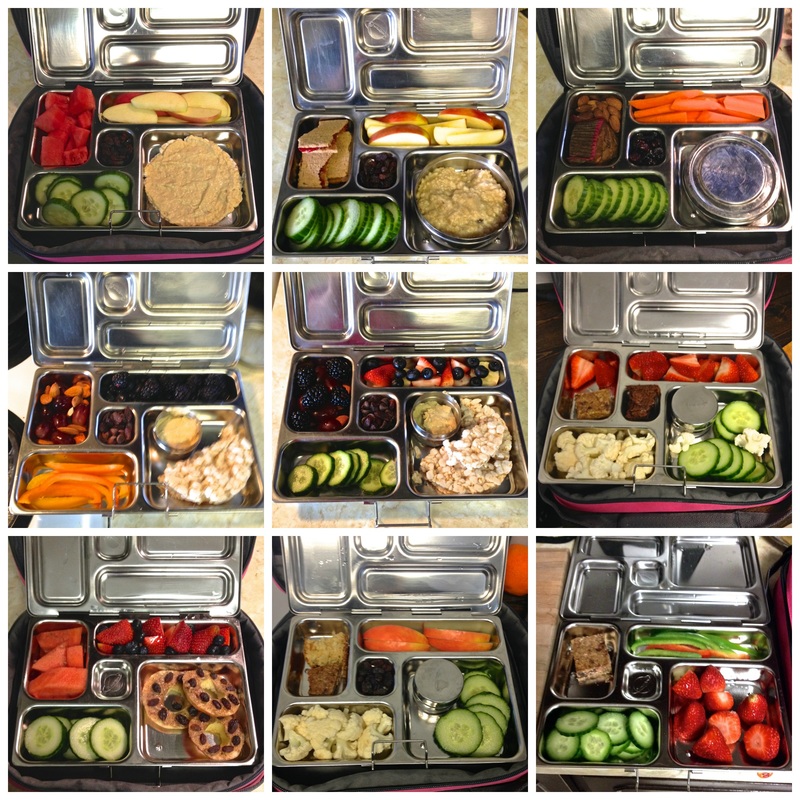
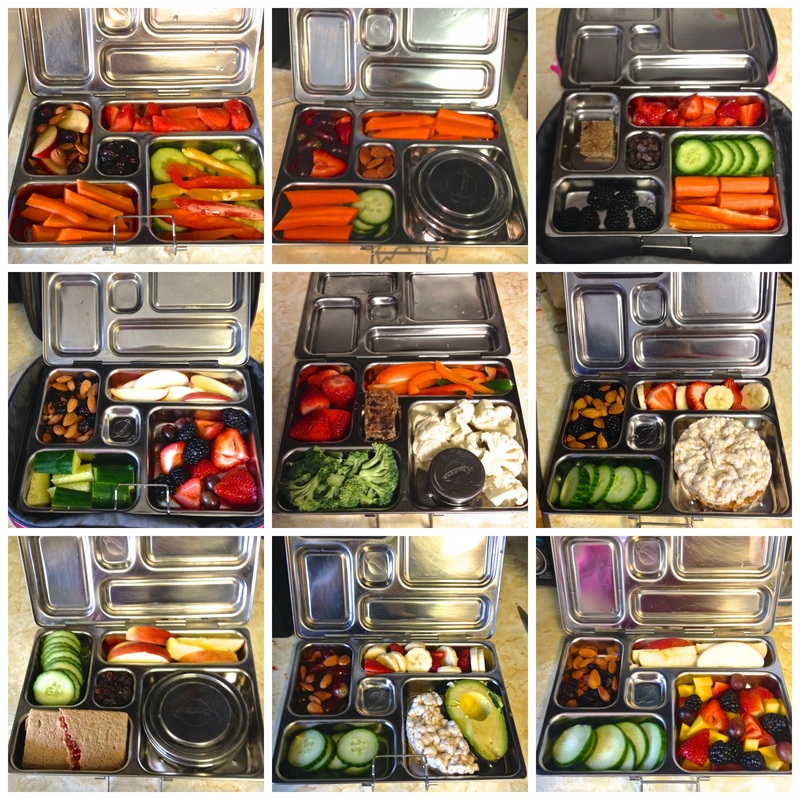
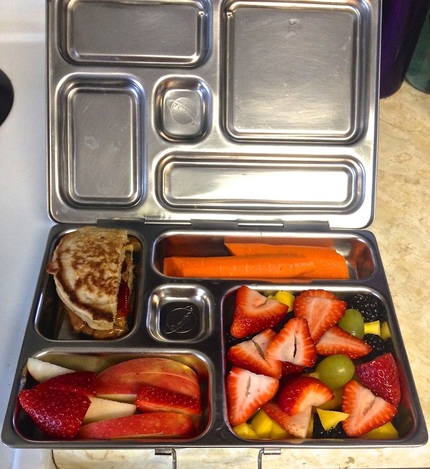
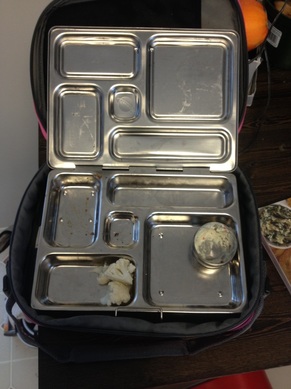
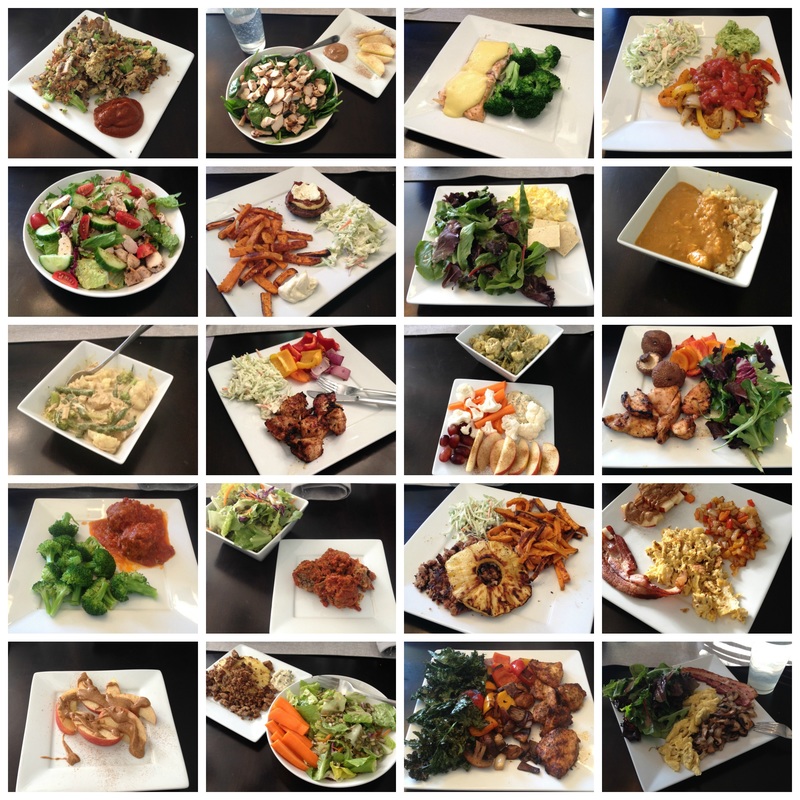
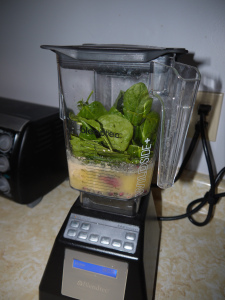
 RSS Feed
RSS Feed
